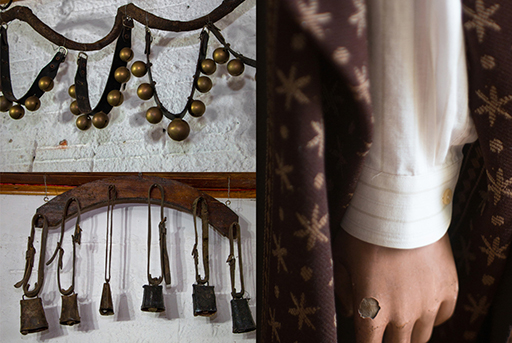
he Pitangui River, with its source on Serra de Itaiacoca, drains parts of the municipalities of Castro, Carambeí and Ponta Grossa. It empties into the Tibagi below the mouth of the Bitumirim and above the old port of São Bento. From the First Plateau, where it is born, it crosses the Devonian Escarpment along an underground course. When it surfaces, it shows a difference in altitude of 42 meters, and is used by a hydroelectric plant (São Jorge, inaugurated in 1945), forming the Alagados Reservoir.
Fazenda Pitangui was part of the great Conceição sesmaria obtained by Pedro Taques de Almeida and his kin. In 1727, José de Góes e Moraes gifted Fazenda Pitangui to the Jesuits seated in the Casa de Missões of Paranaguá. In that place the Jesuits, who had been established in the area since 1707, founded a small chapel dedicated to Saint Barbara, where they celebrated baptisms and marriages. A cemetery was built next to the chapel. Many fazendeiros and their families, the first occupants of Campos Gerais, were buried there.
When the Jesuits were expelled from Brazil in 1759, the fazenda was confiscated by the Portuguese Crown and the property given over to the Diocese of São Paulo,which contracted new administrators.
When the fazenda was leased to Atanagildo Pinto Martins in 1806, a full inventory was made. In the list of assets, there were 31 slaves, living in rammed earth houses with their families. Three elderly slave women, 93-year-old Gertrudes, Domingas, 81, and Páscoa, 79, named in the inventory, must have lived on the fazenda since the time of the Jesuits. Also listed were 500 horses, 100 head of cattle, 83 sheep and only two hinnies. There were tools for iron-working, carpentry and farming, like hoes and sickles. The houses and slave quarters were listed and their value set, as well as the chapel made of stone and mud, with various images of saints, old catechisms, Nativity scenes, bottles of Holy Oils, and religious vestments. Later on, these lands were auctioned off to private owners. The Chapel of Saint Barbara of Pitangui was taken under protection by the Coordenação do Patrimônio Cultural do Estado do Paranáin 2000. According to the Livro de Tombamento, “despite the actions of time, the chapel still holds some original traces: the pulpit, the old bell, two baptismal fonts sculpted in wood, the thurible, vestments, and the clay sculpture of Saint Barbara wearing a silver crown encrusted with colored stones”.
click on picture
to enlarge